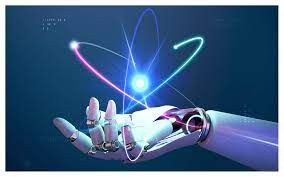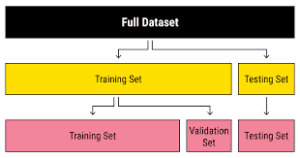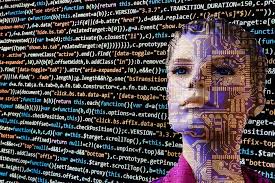The Best Image Dataset for Machine Learning
Introduction to Image Datasets for Machine Learning
Image datasets play a crucial role in training machine learning models to recognize and classify visual information. In the realm of computer vision, the selection of the right image dataset is paramount to the success of any machine learning project. This article aims to guide you through the process of choosing the best image dataset for your specific machine learning task.
Importance of Choosing the Right Image Dataset
The choice of an image dataset can significantly impact the performance and accuracy of a machine learning model. A well-curated and diverse dataset ensures that the model learns to generalize patterns and features, making it more robust and capable of handling real-world scenarios. On the other hand, a poor-quality or biased dataset can lead to biased and unreliable predictions.
Commonly Used Image Datasets in Machine Learning
There are several popular image datasets widely used in the field of machine learning. Some of the most well-known ones include:
- MNIST: The MNIST dataset consists of 70,000 handwritten digit images, widely used as a benchmark for image classification tasks.
- CIFAR-10: CIFAR-10 comprises 60,000 color images across 10 different classes, making it suitable for multi-class classification tasks.
- ImageNet: ImageNet is a vast dataset with over 14 million images, covering thousands of classes, making it ideal for large-scale classification and object detection tasks.
These datasets serve as a starting point for many machine learning projects, providing a solid foundation for training and evaluation.

Factors to Consider When Selecting an Image Dataset
Choosing the right image dataset requires careful consideration of several factors. Some key aspects to evaluate include:
- Relevance: Ensure that the dataset aligns with your specific machine learning task. Consider the domain, resolution, and types of images included.
- Size: The dataset should be large enough to capture the variability and complexity of the target problem. Insufficient data may lead to overfitting, while excessive data can be computationally expensive.
- Diversity: Look for datasets that encompass a wide range of variations, such as different lighting conditions, angles, and backgrounds. Diversity helps the model generalize better to unseen data.
- Quality: Assess the quality of the dataset by examining the labeling accuracy, consistency, and potential biases. High-quality datasets are crucial for building reliable and unbiased models.

Best Image Datasets for Specific Machine Learning Tasks
Different machine learning tasks require specific types of image datasets. Here are some recommendations based on the task at hand:
- Image Classification: For general image classification tasks, the ImageNet dataset is often the go-to choice due to its vast coverage and diverse classes.
- Object Detection: The COCO dataset provides a comprehensive collection of images annotated with object bounding boxes, making it suitable for object detection and localization tasks.
- Semantic Segmentation: The Cityscapes dataset offers pixel-level annotations for urban street scenes, making it ideal for semantic segmentation and understanding of urban environments.
These recommendations serve as a starting point, and it’s essential to explore task-specific datasets for optimal results.
How to Evaluate the Quality of an Image Dataset
Evaluating the quality of an image dataset is crucial to ensure reliable and accurate machine learning models. Here are some steps to assess dataset quality:
- Visual Inspection: Manually review a subset of images to check for labeling errors, inconsistencies, and potential biases. This step helps identify any issues that may affect model training.
- Statistical Analysis: Analyze the distribution of classes, image resolutions, and other relevant statistics to understand the dataset’s characteristics. Biases or imbalances may impact model performance.
- Cross-validation: Split the dataset into training and validation sets to evaluate model performance. Use appropriate metrics to measure accuracy, precision, recall, or any other relevant evaluation criteria.
By conducting a comprehensive evaluation, you can ensure the dataset’s quality and make informed decisions during model training.
Steps to Preprocess and Prepare an Image Dataset for Machine Learning
Before feeding an image dataset into a machine learning pipeline, it’s crucial to preprocess and prepare the dataset. Here are some essential steps:
- Data Cleaning: Remove any duplicate or irrelevant images from the dataset. This step helps reduce noise and improve model performance.
- Normalization: Normalize the image data to a consistent scale to ensure uniformity across the dataset. Common techniques include mean subtraction and division by standard deviation.
- Data Augmentation: Enhance the dataset by applying transformations such as rotation, scaling, and flipping. Data augmentation helps increase dataset diversity and reduce overfitting.
- Train-Test Split: Split the dataset into training and testing sets, ensuring that both sets cover a representative distribution of the classes. The training set is used for model training, while the testing set evaluates the model’s performance.
By following these steps, you can preprocess and prepare your image dataset for optimal training and evaluation.
Resources and Tools for Finding Image Datasets
Finding the right image dataset can be a daunting task. However, several resources and tools can simplify the process. Some popular options include:
- Kaggle: Kaggle hosts a wide range of machine learning competitions and provides access to various datasets, including image datasets.
- Google Open Images: Google Open Images is a vast collection of annotated images, covering a wide range of categories and tasks.
- Academic Datasets: Many academic institutions and research groups release their image datasets, which can be valuable resources for specific domains and tasks.
Exploring these resources and tools will help you discover diverse and high-quality image datasets for your machine learning projects.
Challenges and Limitations in Using Image Datasets for Machine Learning
While image datasets are invaluable for training machine learning models, they also come with challenges and limitations. Some common issues include:
- Labeling Errors: Human labeling can introduce errors and inconsistencies in the dataset, impacting model performance.
- Bias and Imbalance: Datasets may suffer from biases or imbalances, leading to skewed predictions and unfair model behavior.
- Domain Adaptation: Models trained on one dataset may struggle to generalize to unseen data from a different distribution or domain.
- Privacy and Ethical Concerns: Image datasets may contain sensitive or private information, raising concerns about privacy and ethical considerations.
Understanding these challenges and limitations is crucial for mitigating their impact and ensuring the responsible use of image datasets.

Conclusion and Recommendations for Choosing the Best Image Dataset for Machine Learning
Selecting the right image dataset is a critical step in any machine learning project. By considering factors such as relevance, size, diversity, and quality, you can make an informed decision. Additionally, evaluating dataset quality, preprocessing the data, and leveraging available resources and tools will further enhance your model’s performance.
Remember, there is no one-size-fits-all dataset. Each machine learning task requires a dataset tailored to its specific requirements. By investing time and effort into selecting the best image dataset, you pave the way for accurate and reliable machine learning models.
Now that you have a better understanding of the importance and considerations in choosing an image dataset, start exploring the vast world of image datasets and unlock the true potential of machine learning in computer vision tasks.

